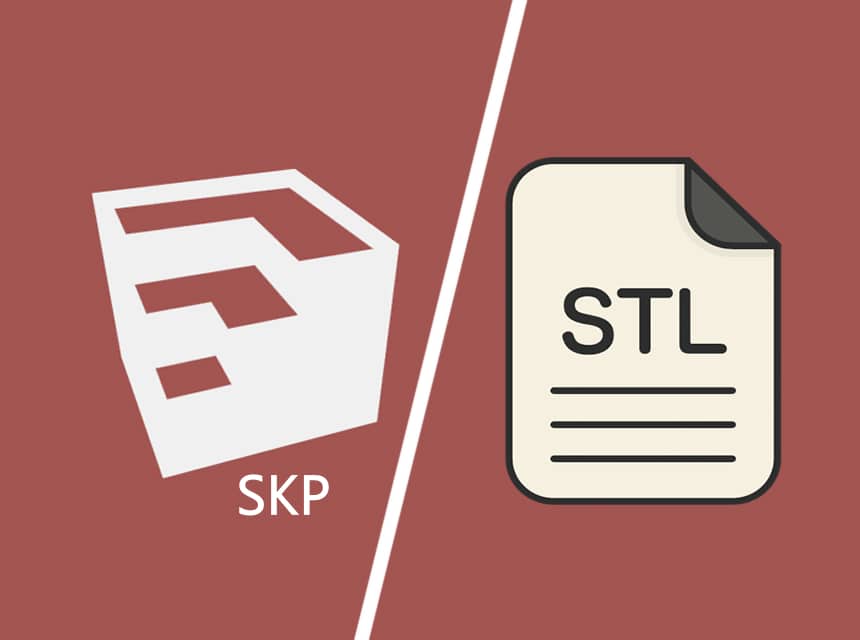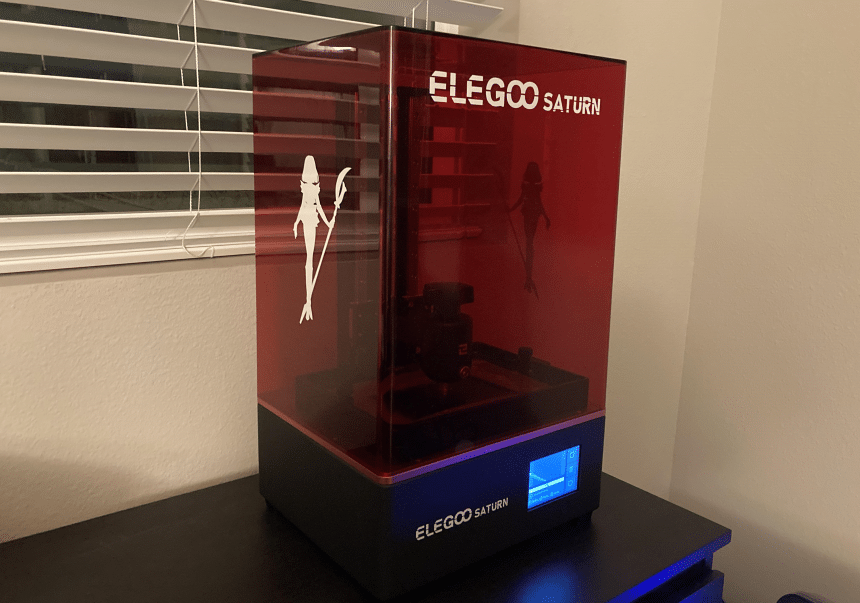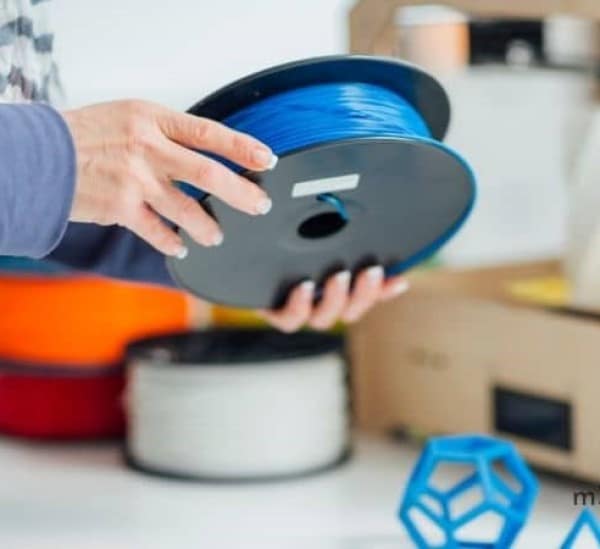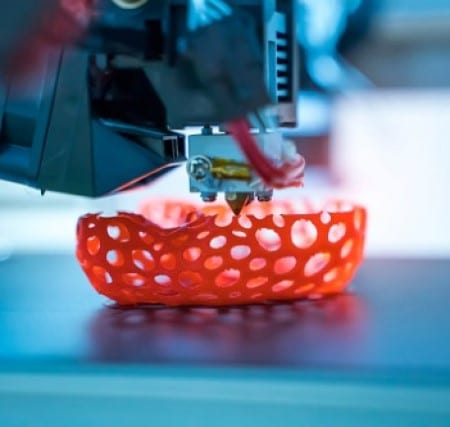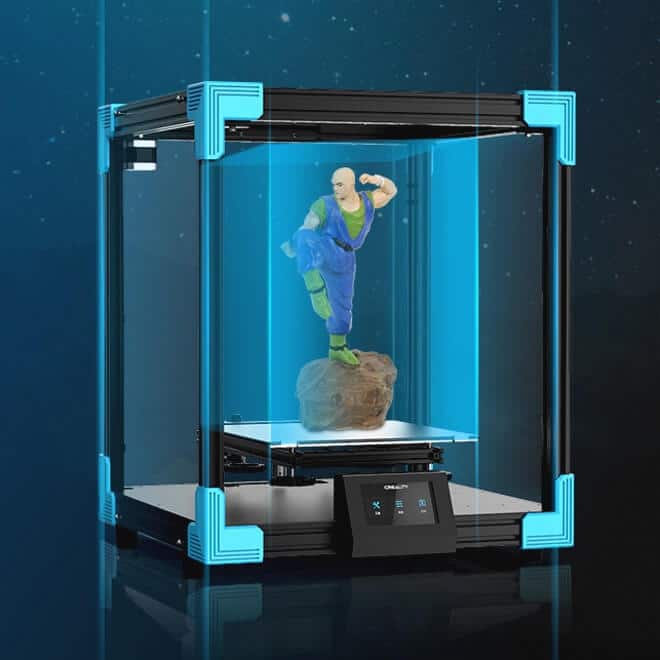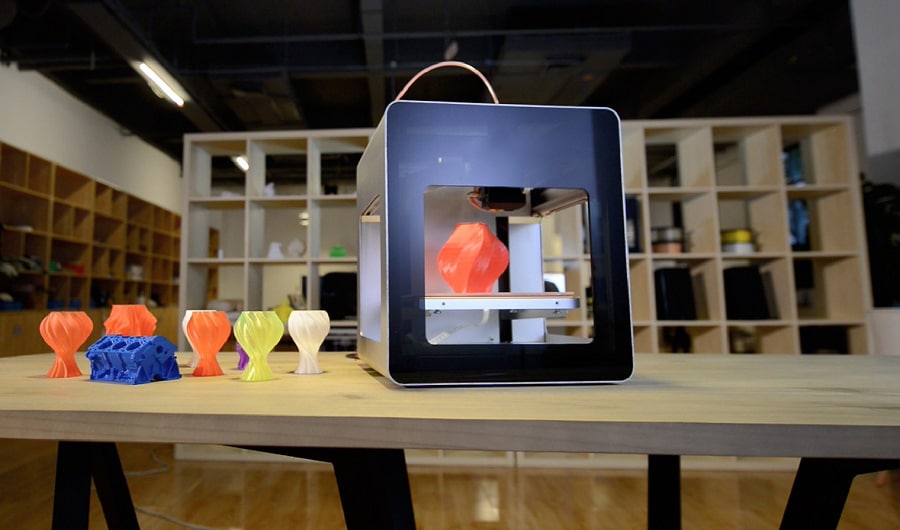

Are you thinking of introducing your kids to three-dimensional printing technology? Children love to let their creativity run free. 3D printing offers a relatively new possibility for this. Although this places higher demands on the user than 2D printing, there are some child-friendly models that are easy to use and affordable, enabling the young to realize their 3D printer projects.
Whether it is about making their own plastic toys or equipping your smartphone with a mobile phone case you have designed yourself – with the best 3D printer for kids, there are hardly any limits to the inexhaustible imagination of young users. From printers with FDM, FFF, or both printing technologies with child-friendly features, in our guide, you can find out what child-friendliness means for 3D printers and which devices are particularly suitable for young makers. Keeping these in mind, the Flashforge Adventurer 3 took our Editor’s Choice nomination.
The Sidewinder X1 is the first extraordinary model from the relatively new manufacturer Artillery / EVNOVO. The pre-assembled kit is particularly easy for beginners. This can be seen in the fact that it is ready to print in under 30 minutes.
In contrast to the Creality CR-10, a direct drive extruder is also used. Pretty much all materials can be printed well with it. Especially flexible materials can often not be processed using the Bowden extruder principle. If a filament change should be necessary, this can be done without errors in seconds thanks to the excellent extruder-nozzle interaction. The use of larger (and of course smaller) nozzle diameters is also possible, for example, to print large objects faster. The standard is 0.4mm in diameter.
The Kingroon 3D printer works with FDM technology. It’s one of the best 3D printers you can buy when you’re on a budget. It comes with assisted bed leveling, preloaded 3D models, an LCD touch screen, and can restart printing after power failure.
This 3D printer is great for beginners with its simple calibration, touchscreen, and assisted leveling. With some 3D printers, installation alone before printing can take a long time; therefore, the Kingroon is a wonderful alternative to save time in the general procedure. Beginners, teachers, and professional designers would love this 3D printer very much.
If you’re looking to get started with 3D printing or want a printer that your kid can use, the Monoprice Voxel Printer is a great option. It delivers high-quality prints without costing you a fortune. The Voxel is fast too. The printing speed is 10 to 100 mm/s, something we generally see from more expensive devices. Beginners will especially appreciate the heated build deck, which means more reliable prints when using materials like ABS. The top of the print bed also slides out and can be folded, making removing prints a breeze.
The Monoprice Voxel is, so to speak, a “relaunch” of the well-known Flashforge Adventurer 3. It has a completely closed build chamber, bed leveling, a removable print bed, integrated memory, and WiFi connectivity.
Like conventional children’s toys, a 3D printer should also bring joy to the youngsters, be easy to use, and, in the best case, promote creativity and skill. Criteria such as ease of use, safety (including health compatibility), and quality must be taken into account when selecting a device. The price is not entirely unimportant, but you should attach little importance to it compared to the other factors. In this section, we will give you all the information you need when you need to buy a children’s 3D printer.
While trying to purchase the best learning 3D printer for kids, some of the basic considerations should be ensured.
In addition to getting you started in model making and 3D printing, the rest of the article also includes tips. What criteria should be considered when purchasing this type of device?
Above all, FDM and FFF devices like the Flashforge Adventurer 3 or the Artillery Sidewinder X1 are relatively easy to finance for private users. SLA printers Trusted Source The Ultimate Guide to Stereolithography (SLA) 3D Printing Learn about the different stereolithography (SLA) 3D printers, materials, applications, and how SLA compares to other types of 3D printing technologies. formlabs.com were theoretically also possible, but for the most part, they are too expensive for toys. This results in certain material restrictions. Metal objects cannot be produced with this method. An alternative would be 3D printing services, where your child can upload their model and then receive the finished product.
FDM printers are ideal for a start. With these, printing is relatively inexpensive and post-processing is easier than with the other two variants. For example, you don’t need any special aids such as alcohol to clean the objects or a UV chamber for curing. In addition, due to the popularity of these devices, more user experiences can help your child with problems.
When choosing the device, make sure that the materials required for the application can be printed with it. All you need to do is compare the temperatures of the print bed and nozzle with the values required for the plastics. The more that can be used (pay attention to safety!), the better.
The resin used in the SLA/DLP process is quite toxic. Therefore, you should rather choose models like the Kingroon 3D Printer that use the FDM method for your offspring. A wide variety of plastics are now available. Unfortunately, not everyone is safe and suitable for children here either. As EPA researchers discovered Trusted Source EPA Researchers Continue to Study the Emissions of 3D Printers | US EPA EPA researchers are studying the characteristics and health effects of 3D printer emissions to protect users as the market for these printers grows. www.epa.gov , these printers emit a relatively high concentration of nanoparticles that can accumulate in the body. If you want to protect your child more or less well against it, make sure that the device has a HEPA/carbon filter and has a closed construction.
Wireless printing is an even better option. With this option, the device can be in another room. This means that your offspring is not only safe from the nanoparticles, but also from any vapors that might escape.
Make sure that the room is well ventilated to avoid a (possible) accumulation of toxic fumes! Here is something you should know about some typical plastics:
All 3D printers have a limit on the 3D print sizes they can create. The print bed surface and the distance the printer needs to travel to the print head determine the size, usually given as cubic inches. The individual size of the machine also determines the size of the 3D print the device can produce
3D printing, without a doubt, is slow and, as of now, there are no “fast” models, especially for kids. You should expect that the 3–4-inch models will typically take 6–12 hours to print, depending on the print quality you choose. This is how 3D printing works: printing is made up of layers. The thicker the layers, the faster the print is produced, but the lower the quality because the layers are more visible. So there’s a balance between print speed and print quality. If you need a 3D printer that prints fast, we recommend the FlashForge Finder, which can print up to 200 mm per second.
Among other factors, the print quality depends on the software, the device, and the experience of the user, for example on the print parameters and settings selected by him. The device should be built to be robust and stable.
The fewer vibrations the frame material or construction allows, the better the printing results. If your child would like to process flexible filaments with an FDM printer, a device with a direct drive extruder is recommended instead of a Bowden extruder. Misprints can be reduced by features such as a filament sensor and an automatic print resume (e.g., after a power interruption), a function you can find in Anycubic’s Mega Zero 2.0.
Good bed calibration and adhesion also help. FDM printing is also more reliable when there are as few hot-end blockages as possible. So far, these cannot be completely avoided. In addition to the print quality, keep an eye on the processing quality, of course.
High-quality parts such as a frame made of steel or aluminum are preferable to cheap materials such as acrylic. This is in contradiction to the fact that a 3D printer should be as inexpensive as possible for children. However, the availability of cheap, relatively good devices for young makers has so far been very limited. Security has its price.
Concerning the mechanics, you should above all make sure that body parts, skin, hair, and clothing are protected from moving parts.
For the well-being of your child, ask yourself the following questions:
Printers with no hotbed are the safest for kids but there are limited filaments they can process. A removable, flexible print bed can be removed from the printer and simply bent, which makes it much easier to remove the prints. “Ultrabase” print bed surfaces (silicon carbide, for example in the Anycubic – I3 Mega) are also very user-friendly. If such a print bed is hot, the objects adhere well to it. If the bed cools down, they can be easily removed. A spatula is only required in exceptional cases.
Choose a printer with easy to use bed leveling system. It ensures the bed is level so that the distance between the nozzle and the build plate surface is precise enough. The printer can come with a manual or assisted leveling system.
Among other factors, the print quality depends on the software, the device, and the experience of the user, for example on the print parameters and settings selected by him.
With FDM printing, in particular, the software has a major impact on quality. Since proprietary software is often limited in its possibilities. Also, pay attention to the usability of open-source slicer software.
Children may for the first time become familiar with 3D design software necessary for printing, so if the program is the brand’s own it would be better because they are more intuitive and easier to use. On the contrary, open software is a bit more complex but not for that reason impossible to handle for the children of the digital age.
So that the installation of the printer does not pose any major problems for your child, clarify the following questions:
When buying, make sure that the product includes complete instructions in at least a language that you understand. Ideally, this should contain answers to questions about typical problems or a reference to an FAQ page available online.
Also, keep an eye on the time for preparation and follow-up. Children often lack patience. Long post-processing times in particular can quickly lead to frustration and disinterest. The less there is to do after the print is finished, the better. In this regard, FDM offers advantages over SLA and DLP.
However, printing itself is a bit more difficult, as the interplay of filament (material properties), pressure settings (temperatures and speeds), and the device (object cooling, vibration, etc.) must work.
Basically, in the FDM area for beginners, especially for children, devices with a Cartesian drive system are recommended rather than delta 3D printers, as they are easier to calibrate manually. Dual extruders are also less suitable as they are also more difficult to calibrate and use
Kid-friendly printers aren’t expensive but they can sometimes come with defects that come from the manufacturer. Warranty coverage can protect you and the printer in this case.
Most three-dimensional printers like the VOXELAB Aquila 3D Printer come with a limited warranty of one year. Sometimes, you could have an option to extend further at an additional cost.
The Adventurer 3 from FlashForge is our Editor’s Choice for the best 3D printer for kids. It is easy to use and features a touch screen UI that is very intuitive. The hotend has been revised and now works with all types of filaments, including PETG and PLA.
The Voxelab Aquila is an excellent 3D printer for those who are looking for a machine that is compatible with multiple types of filaments. It has a sturdy build and offers great print quality.
The Qidi Tech i-Mate is a good and beginner-friendly 3D printer that offers a lot of features for its price. If you are looking for a 3D printer to quickly and easily print modeled files, the Qidi Tech i-Mate would be a good choice for you.
